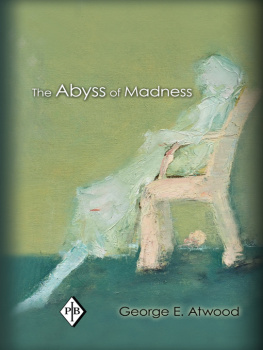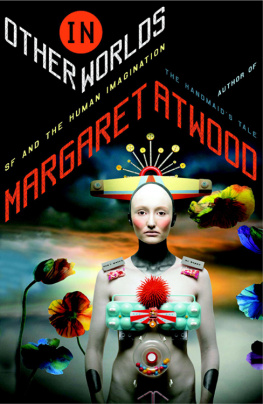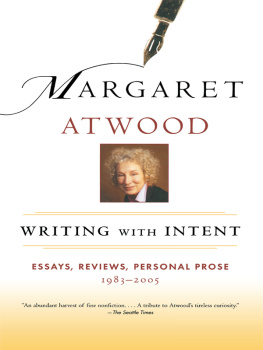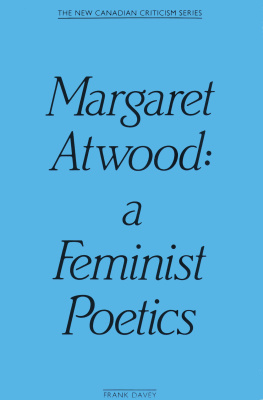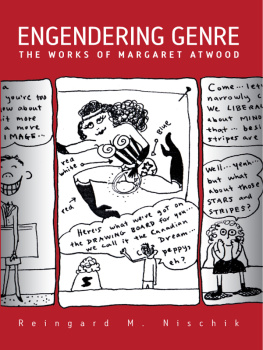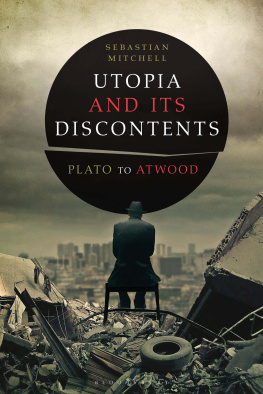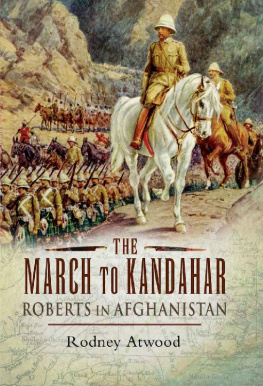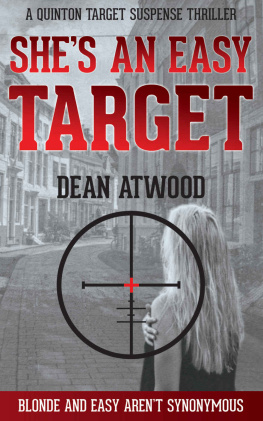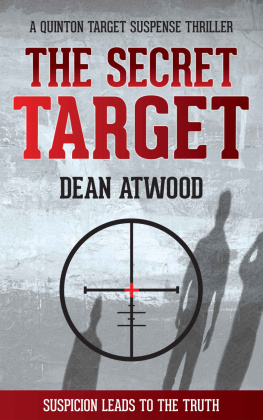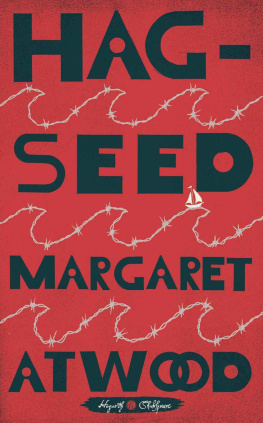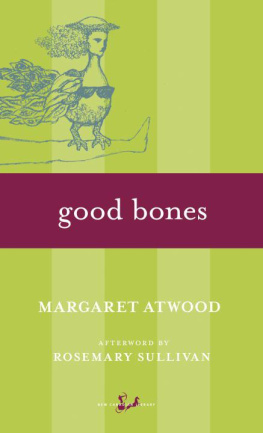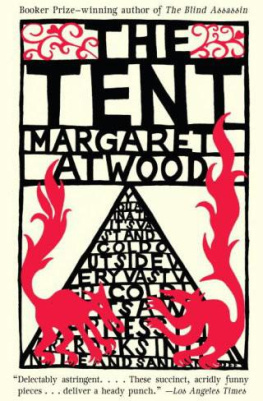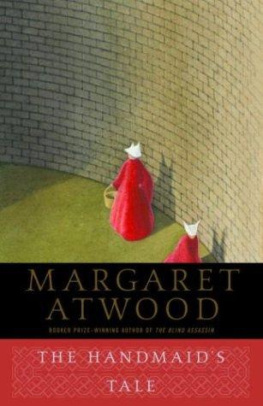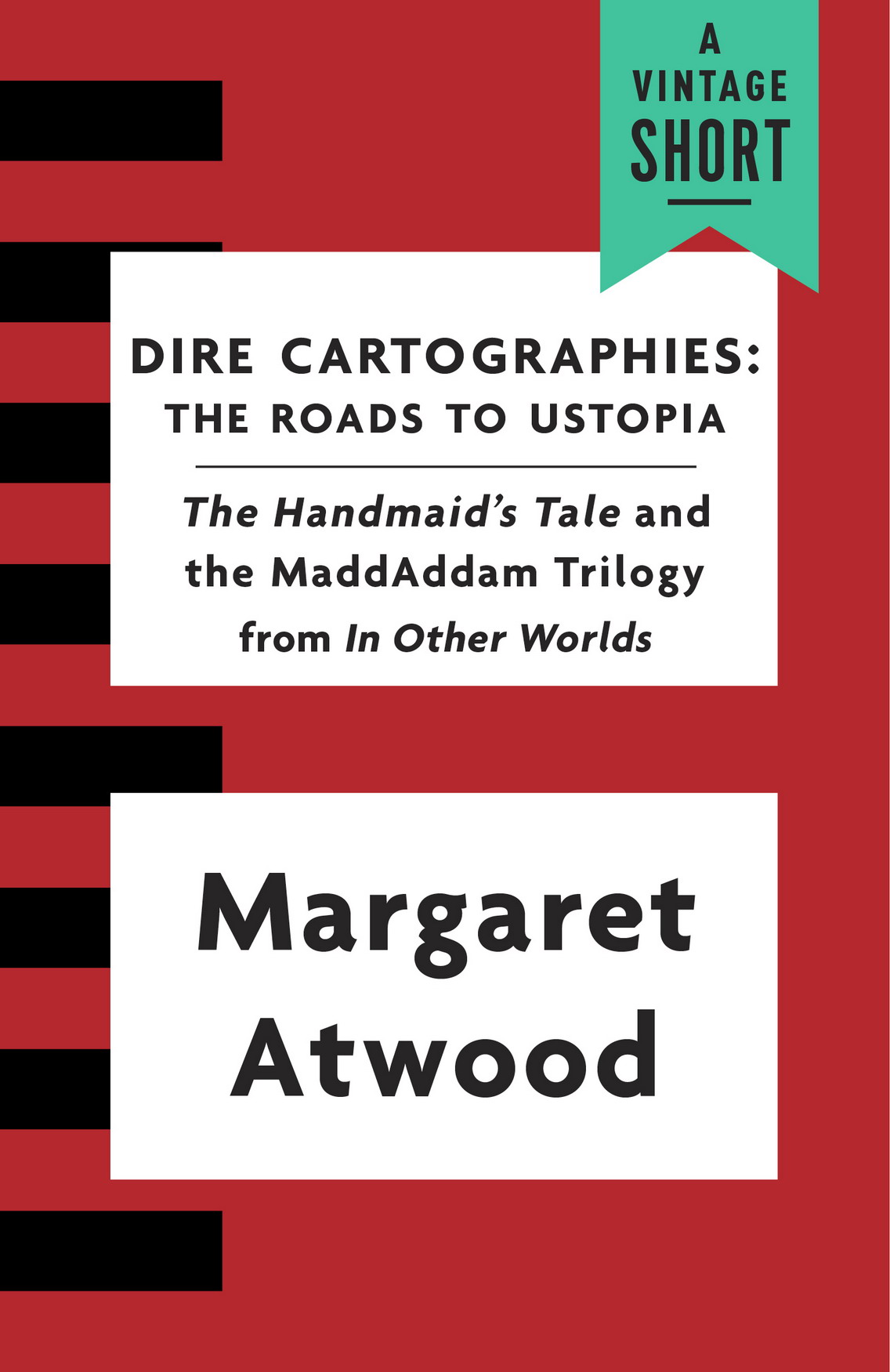Contents
Margaret Atwood
Margaret Atwood, whose work has been published in over thirty-five countries, is the author of more than forty books of fiction, poetry, and critical essays. In addition to The Handmaids Tale, her novels include Cats Eye, shortlisted for the Booker Prize; Alias Grace, which won the Giller Prize in Canada and the Premio Mondello in Italy; The Blind Assassin, winner of the Booker Prize; Oryx and Crake, shortlisted for the Booker Prize; and her most recent, The Heart Goes Last. She lives in Toronto with writer Graeme Gibson.
www.margaretatwood.ca
A LSO BY M ARGARET A TWOOD
Fiction
The Edible Woman
Surfacing
Lady Oracle
Dancing Girls
Life Before Man
Bodily Harm
Murder in the Dark
Bluebeards Egg
The Handmaids Tale
Cats Eye
Wilderness Tips
Good Bones
The Robber Bride
Alias Grace
The Blind Assassin
Good Bones and Simple Murders
Oryx and Crake
The Penelopiad
The Tent
Moral Disorder
The Year of the Flood
MaddAddam
Stone Mattress
The Heart Goes Last
Poetry
Double Persephone
The Circle Game
The Animals in That Country
The Journals of Susanna Moodie
Procedures for Underground
Power Politics
You Are Happy
Selected Poems: 19651975
Two-Headed Poems
True Stories
Interlunar
Selected Poems II: Poems Selected and New, 19761986
Morning in the Burned House
Eating Fire: Selected Poetry 19651995
The Door
Nonfiction
Survival: A Thematic Guide to Canadian Literature
Days of the Rebels: 18151840
Second Words
Strange Thing: The Malevolent North in Canadian Literature
Two Solicitudes: Conversations (with Victor-Levy Beaulieu)
Negotiating with the Dead: A Writer on Writing
Moving Targets: Writing with Intent 19282004
Curious Pursuits: Occasional Writing
Writing with Intent: Essays, Reviews, Personal Prose, 19832005
Payback: debt and the Shadow Side of Wealth
In Other Worlds: SF and the Human Imagination
For Children
Up in the Tree
Annas Pet (with Joyce Barkhouse)
For the Birds
Princess Prunella and the Purple Peanut
Rude Ramsay and the Roaring Radishes
Bashful Bob and Doleful Dorinda
Wandering Wenda
Dire Cartographies:
The Roads to UstopiaThe Handmaids Taleand the MaddAddam Trilogy
from In Other Worlds
by Margaret Atwood
A Vintage Short
Vintage Books
A Division of Penguin Random House LLC
New York
Copyright 2011 by O.W. Toad
All rights reserved. Published in the United States by Vintage Books, a division of Penguin Random House LLC, New York. Previously published in hardcover as a part of In Other Worlds by Nan A. Talese / Doubleday, a division of Penguin Random House LLC, New York, in 2011.
Vintage and colophon are registered trademarks of Penguin Random House LLC.
The Cataloging-in-Publication Data for In Other Worlds is available from the Library of Congress.
Vintage eShort ISBN9781101972007
Series cover design by Joan Wong
www.vintagebooks.com
v4.1
a
Contents
Dire Cartographies:
The Roads to Ustopia
What we call places are stable locations with unstable converging forces.
REBECCA SOLNIT, Infinite City: A San Francisco Atlas
after WWII utopia was no longer just a synonym for naivet. It was dangerous. Now, decades further on, in a new century and a new millennium, earnest utopian thought and earnest utopians are a glowing ember at best, and utopias legion failures seem to suggest that the best course of action would be to crush itsnuff it for good.
J. C. HALLMAN, In Eutopia
T his essay is about literary utopias and dystopias, and how it came to pass that I found myself writing about them, and thenmany years laterattempting something in that form myself. Ustopia is a word I made up by combining utopia and dystopiathe imagined perfect society and its oppositebecause, in my view, each contains a latent version of the other.
The dire might at first glance appear to be connected only to the obverse or dystopic side of this coin, where unpleasantness prevails, though most utopias viewed slantwisefrom the point of view of people who dont fit into their high standards of perfectionare equally dire. But before expanding on that notion, Ill begin with the second word of my title: cartographies.
Cartography is map-drawing, and the brain is, among other things, a map-making entity. Not only our brains, but also those of other animals with brains. And not only the brains of other animals with brains: even the lowly slime mould, entirely devoid of a central nervous system, maps its adjacent space, figuring outfor instancethe closest route to enjoyable foods. (It prefers oatmeal.) From our earliest days, as soon as we can crawl around on the floor, we are inscribing maps of our surroundings onto the neural pathways in our brains andreciprocallyinscribing our own tracks, markings, and namings and claimings onto the landscape itself. Snails make trails, and so do beavers, and so do tree-scratching bears and hydrant-marking dogs, and soquintessentiallydo we. Were almost as good at finding the shortest path to enjoyable foods as slime moulds are, although our choice may not be oatmeal.
With every map theres an edgea border between the known and the unknown. In old medieval and early Renaissance maps, the edges were where the monsters were drawnthe sea serpents and many-headed hydras, which were, as we say, off the map. Monsters live under the bed when youre little because you cant see under the bed when youre actually in the bed. And thats whats scary about darkness for a lot of people: the unknown. The known is finite, the unknown is infinite: anything at all may lurk in it. Grendel, the monster in Beowulf, is termedin John Gardners reworking of himearth rim roamer and walker of the worlds weird wall. Thats where monsters liveat the edges, at the borders. Monsters also live at the edges of our consciousnessduring the day and in stable times, that is. They take full possession of our field of vision only when were asleep or entranced in some way, as suggested by the title of Goyas enigmatic engraving of 1799, The Sleep of Reason Breeds Monsters.
Why do we so frequently put monsters at the edges of the maps, or under the bed, and alsoin some of its formsin stories of the adventure-romance type? As Roberto Calasso sagely notes in The Marriage of Cadmus and Harmony, heroes need monsters in order to establish their heroic credentials through combat, but monsters most emphatically do not need heroes. And once the monsters are slain, the heroes die as well, to be replaced by urban planning with its crisp maps of the known, and then, in the shadow world hidden or possibly pushed aside by those maps, by more monsters, who are endlessly re-created so that yet more heroesdetectives, spies, police officers, secret agents, and their likemay do battle with them.


